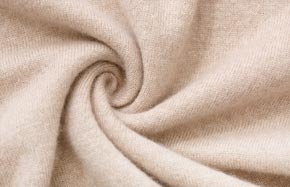What some will do for red hot hair
By Lin Jinghua ( China Daily ) Updated: 2009-11-18 11:09:27To dye or not to dye is a dilemma many people with gray hair face, particularly those who don't believe they are quite at a graying age.

They want to color their hair but at the same time, worry about the side effects of the chemicals in synthetic dyes. Although evidence of cancers caused by hair dyes is not conclusive, few people believe they are harmless.
I am one of them. I have been struggling for years to find a better way to cover my gray. I tried many hair dyes, both Chinese and imported, and finally settled on L'Oreal. Being a well-known brand name, I felt it carried a guarantee of quality and safety.
But it's still a chemical product. I try to prolong the duration between two dyeing sessions and usually put it off until I was reminded several times "there is a white chrysanthemum on your head".
Unfortunately, my hair grows very quickly and I have to use the L'Oreal dye every two months.
Two months ago, I came across a recommendation for a natural dye - henna powder that is popular in the Xinjiang Uygur autonomous region. It is made from a leaf called fengxian which the Uygur people have used for generations to dye their hair and fingernails. It is believed to be completely safe.
I was warned that using henna needs loads of patience. Not that this daunted me. Anything safe was worth it, I reckoned.
It really does take time. For the best results, it has to be prepared and left overnight. Its effectiveness is also greatly enhanced by the addition of other ingredients. Making the dye is like making a tasty dish.
So, one night I placed on the table an egg, a teaspoon of honey and olive oil, a bit of salt, and most importantly a cup of boiled black tea (or a cup of coffee). After the tea became lukewarm, I poured it into the bowl with the green henna powder, and started stirring until it acquired a thick consistency. While stirring, I also kept adding the other stuff. The tea, I was told, is what gives the hair the desired color while the egg, honey, and olive oil nurture the hair and the salt helps seal in the color.
Within 10 minutes a bowl of "porridge" with a strong, strange smell, was ready.
The next morning, I took the bowl downstairs to the beauty salon and asked the young woman there to help me apply it. The porridge remained fresh and thick. It took her about 40 minutes to do the job, at the end of which she wrapped up my head in a plastic wrap. I couldn't help thinking about the broccoli in my refrigerator.
I was told to wait for at least two to three hours, the suggestion being the longer the better. I went home. Fortunately, my "broccoli" head did not get in the way of my other chores. I decided I would not take any chances and doubled the waiting time - to six hours.
After I finished washing, guess what?

Red hair.
The gray parts had turned reddish-orange and glinted under light. It looked really weird.
I rushed down to my trusty hairdresser, who said he knew this stuff. He explained that it was really hard to get natural dyes to cover gray hair and suggested I repeat the application at least three times for a better result.
Be patient, I encouraged myself. No pain, no gain.
After that first time, I've tried henna four more times over the past month and a half. My hair now looks better. Some kind souls tell me it looks quite trendy, but some still think it's weird.
I'm not sure how long I will have the patience for this drill.
Maybe, it's time to switch to a wig.
|
|
|
|
|
|
|
|


























 Raymond Zhou:
Raymond Zhou: Pauline D Loh:
Pauline D Loh: Hot Pot
Hot Pot Eco China
Eco China China Dream
China Dream China Face
China Face






